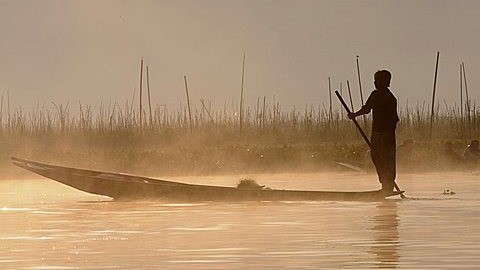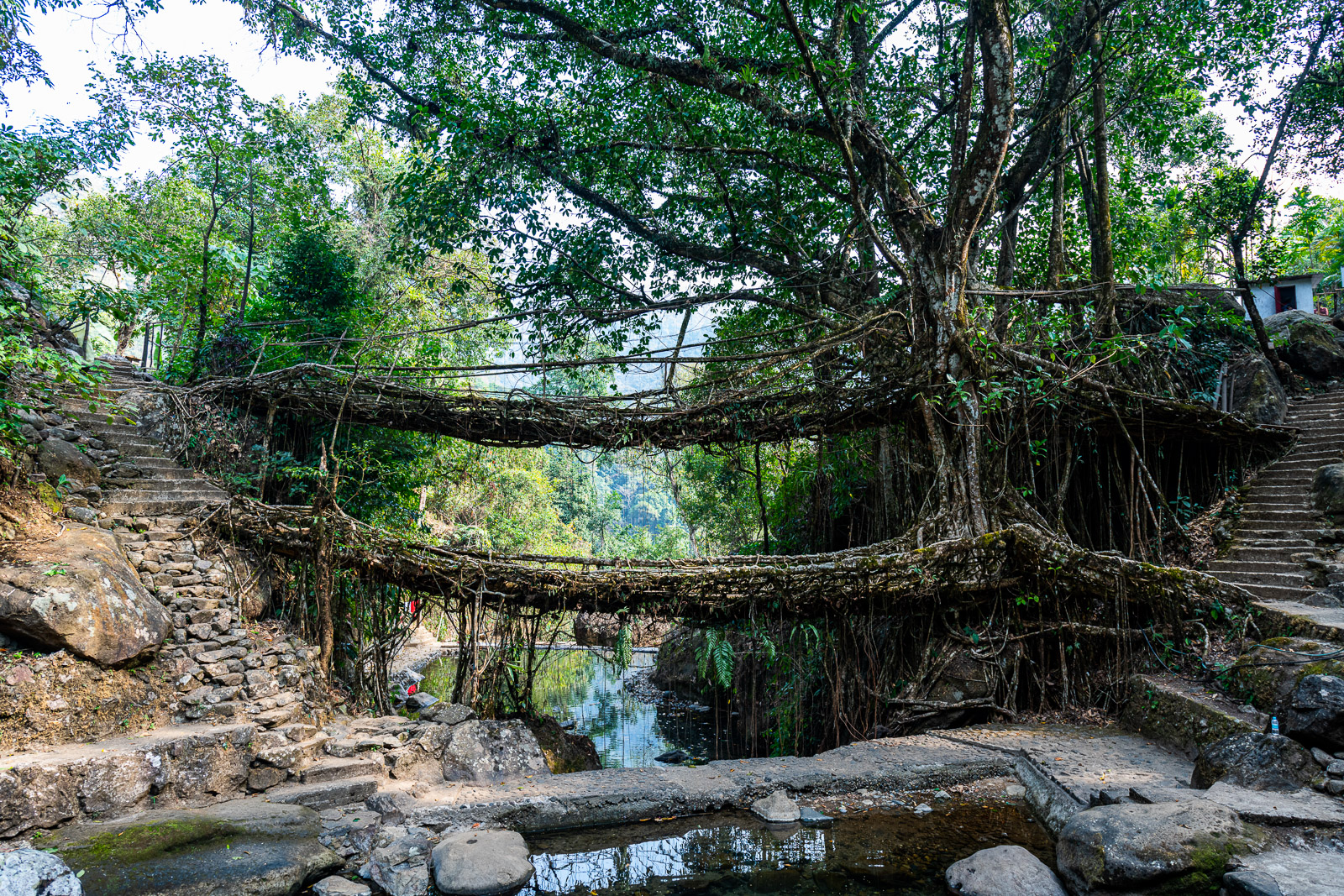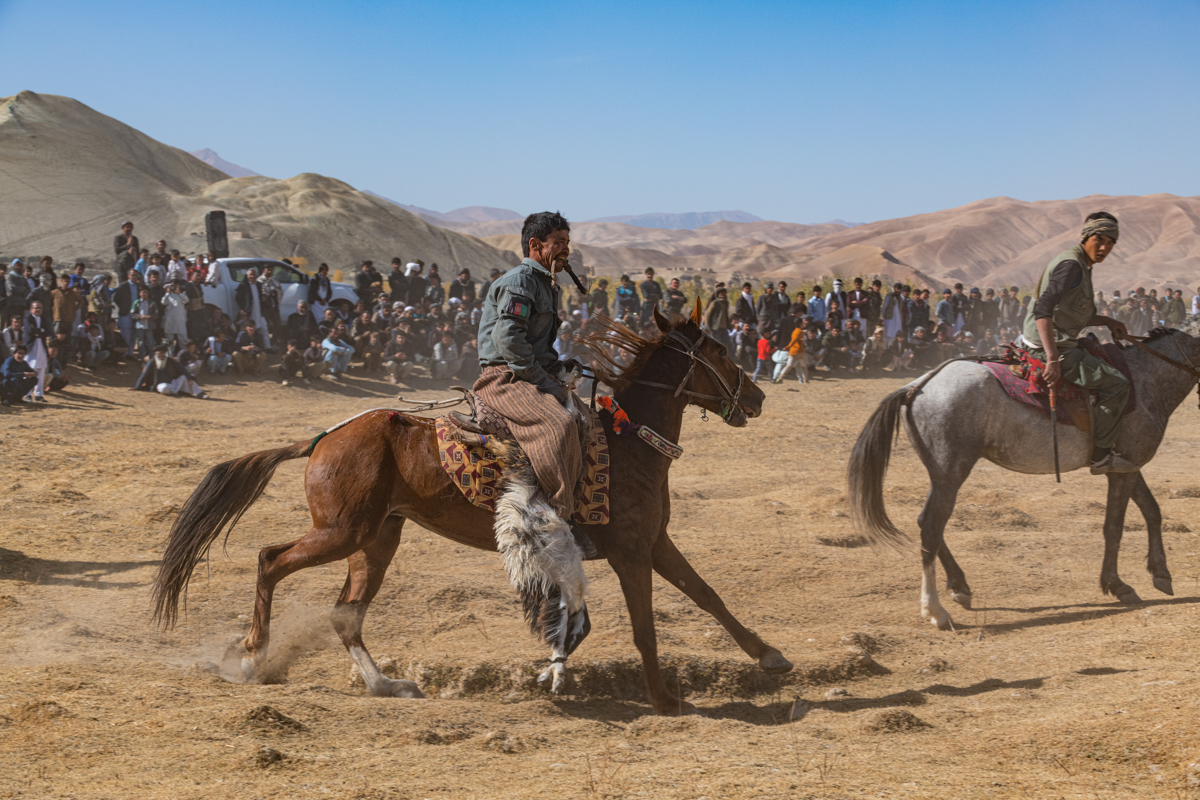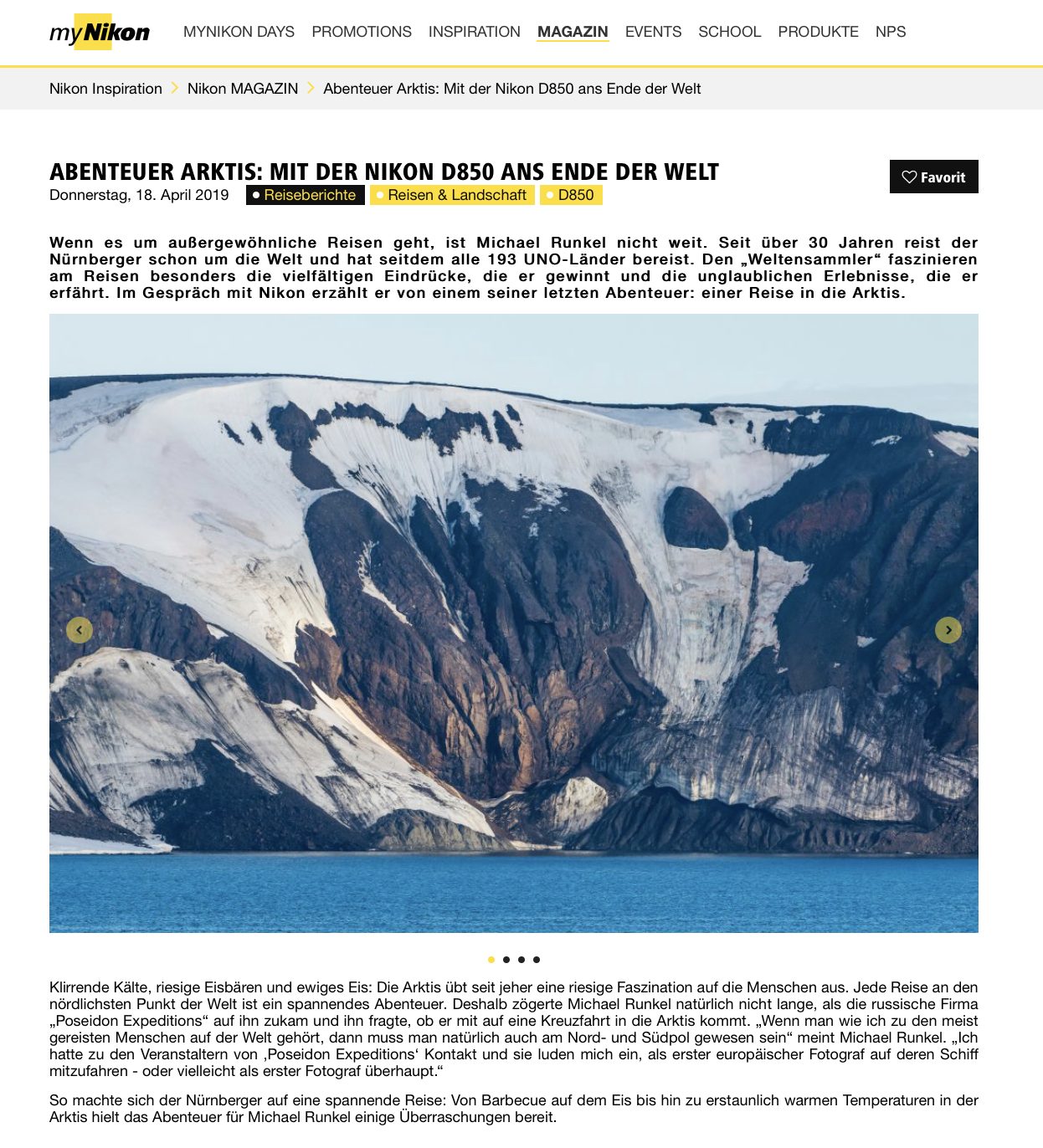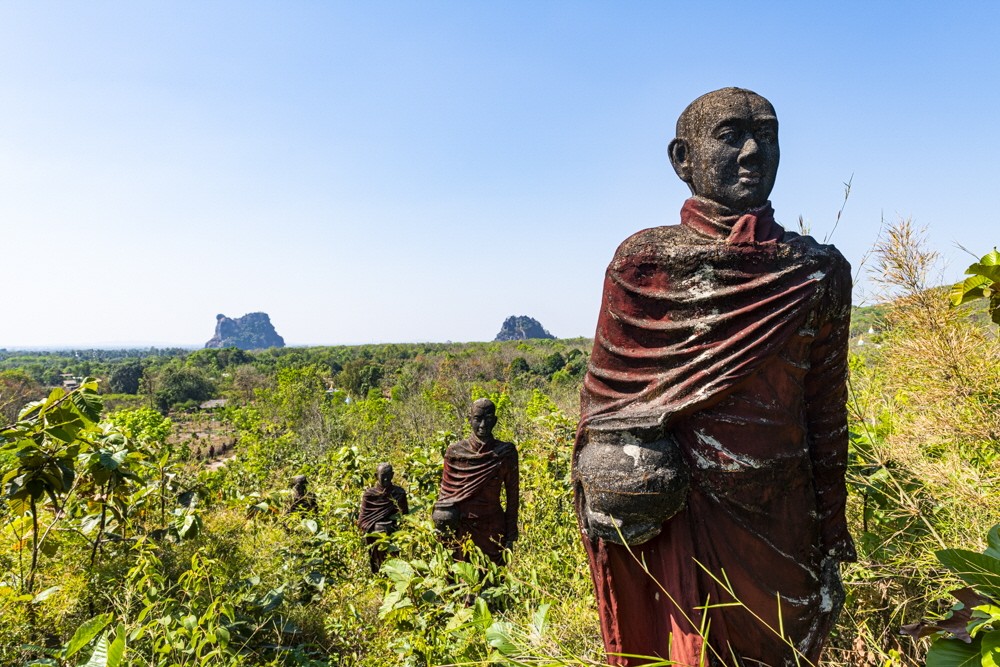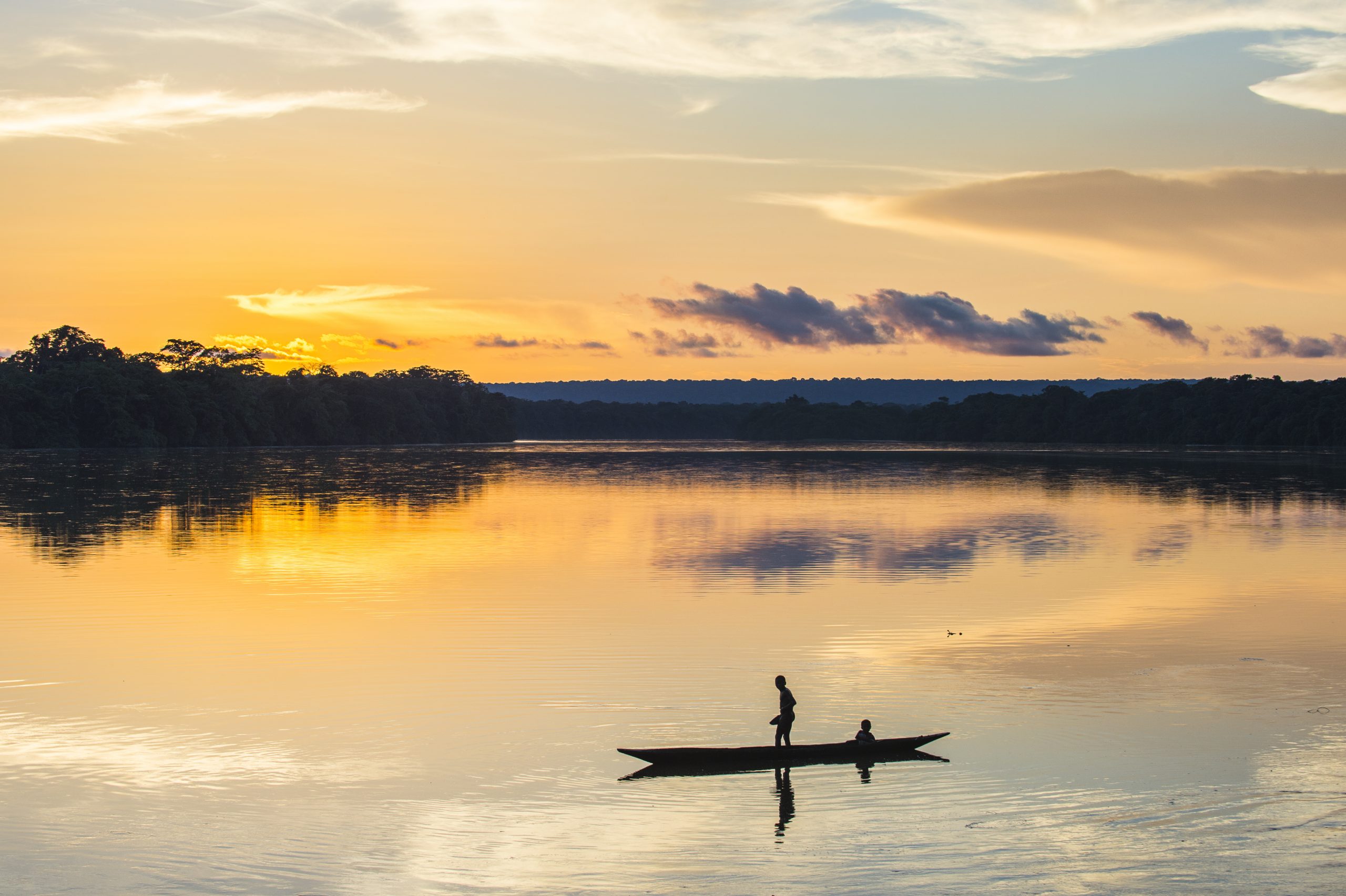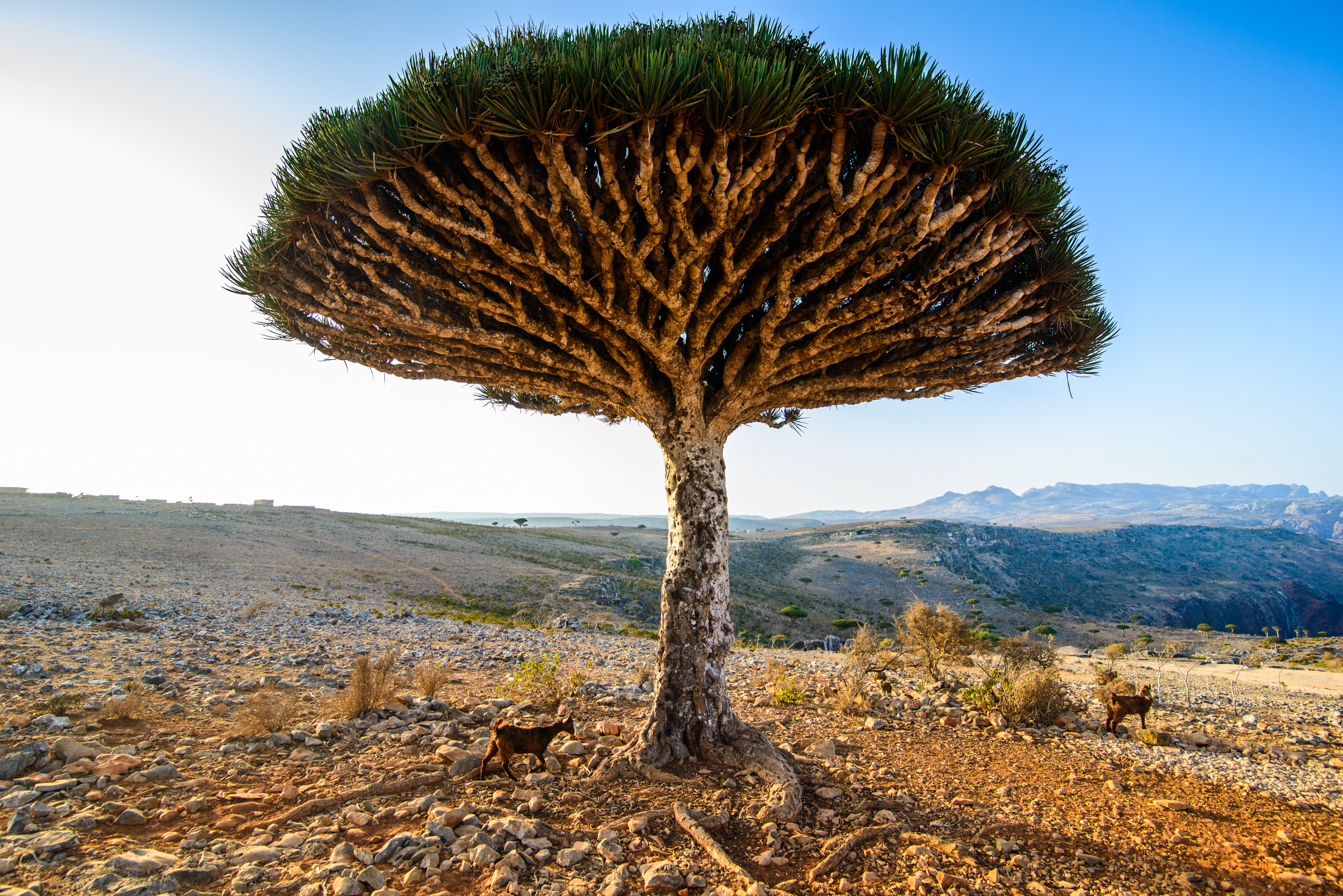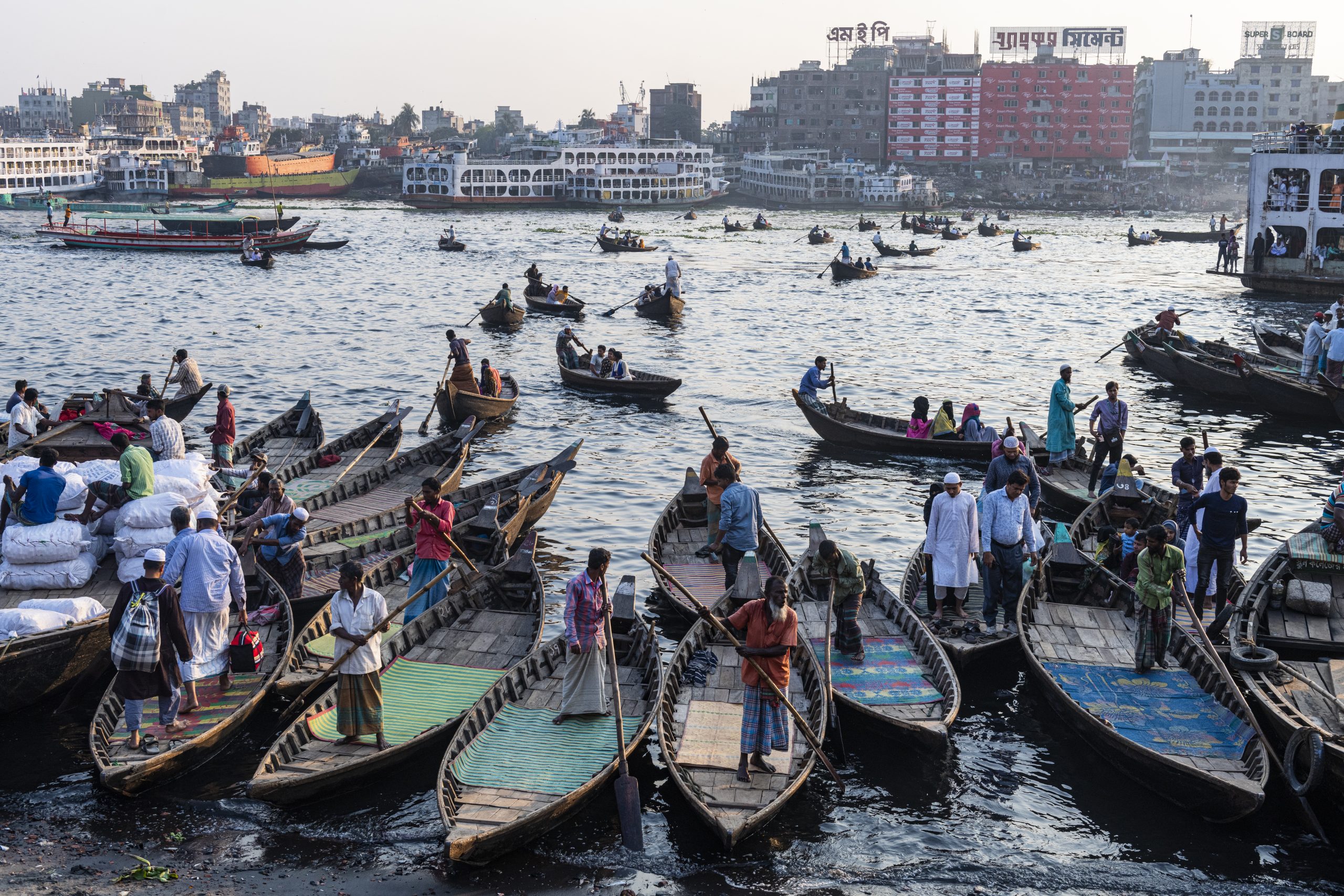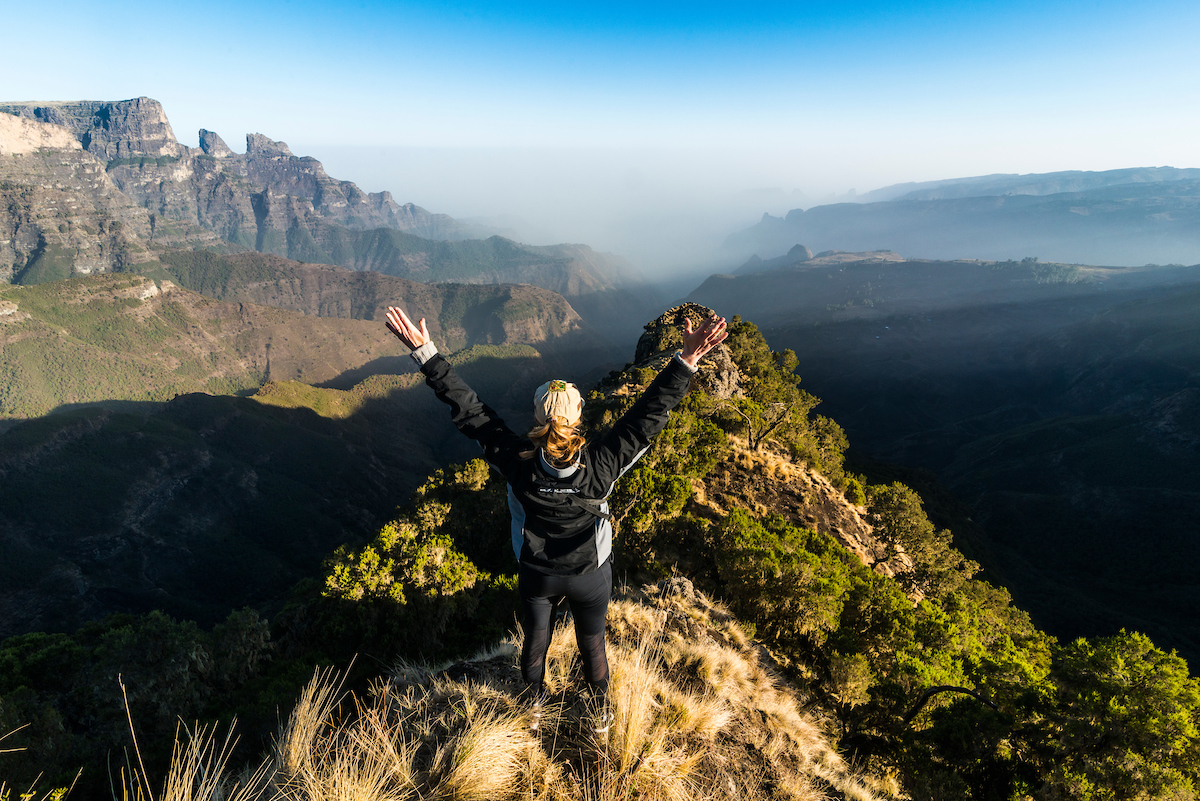A natural phenomenon I’ve wanted to see for many years is the living root bridges of Maghalaya in northeastern India. This part of the country has been regularly named the “wettest place on earth” by the Guinness book of records, and the local Banyan tree here thrives on the wet and rainy weather. This species of Banyan has such a strong root system that has been woven together by the local Khasi people to create these incredible natural structures.
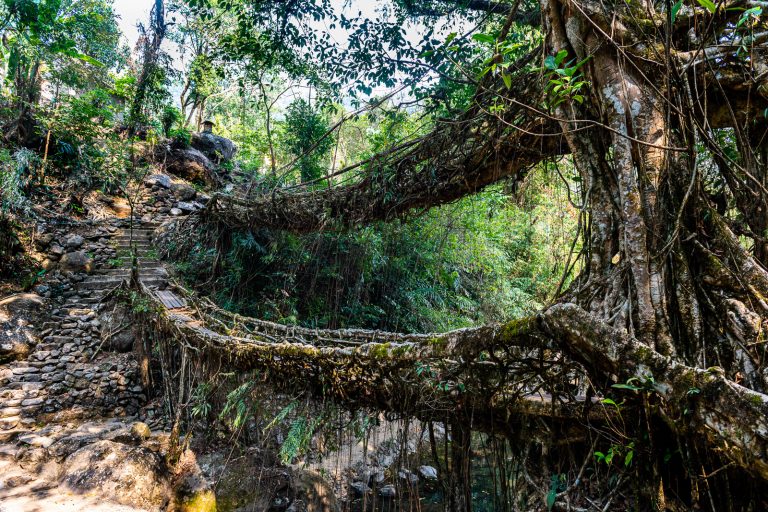
Double Decker Living Root Bridge, Sohra or Cherrapunjee, Meghalaya, India
Ranging from 100 to 150 years old, the roots of the trees are trained by the Khasi, who needed a solution to cross the zig-zagging rivers during the rainy season. A single tree can split its root in to countless smaller ones, all braided together into one flowing, natural bridge. A bridge can take 10 years to complete.
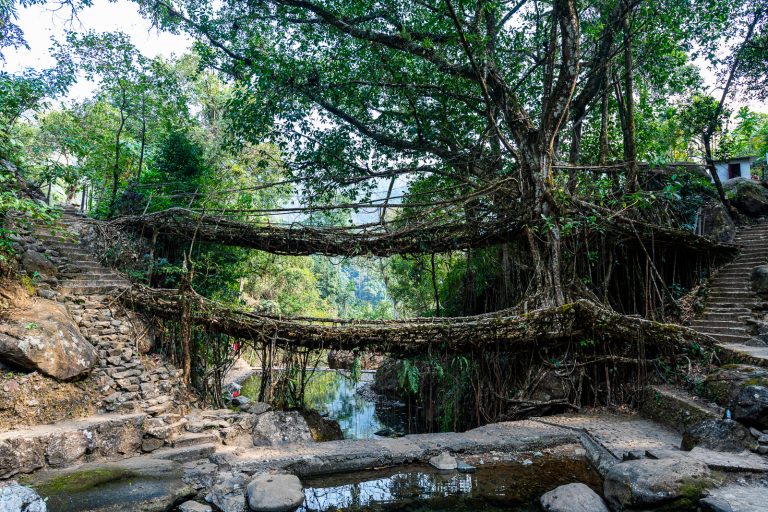
Double Decker Living Root Bridge, Sohra or Cherrapunjee, Meghalaya, India

Mawlynnong living root bridge, Meghalaya, India
Interestingly, when you arrive, it is very different as you would expect “the wettest place on earth” to be: The town of Cherapunji looks like the Scottish highlands with no trees and a lot of grassland. It isn’t until you gaze over the road towards a steep vertical drop that leads to the deeper green wet gorges. In order to reach the bridges, we had to hike 3,500 steps down. So down we went.
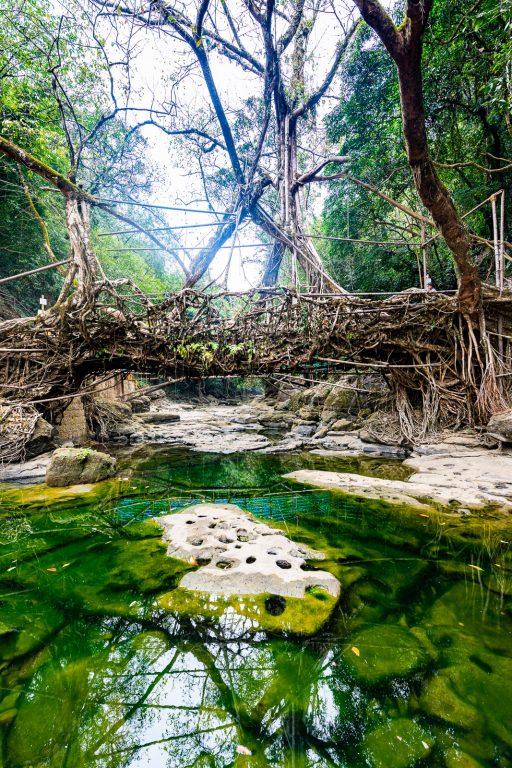
Mawlynnong living root bridge, Meghalaya, India
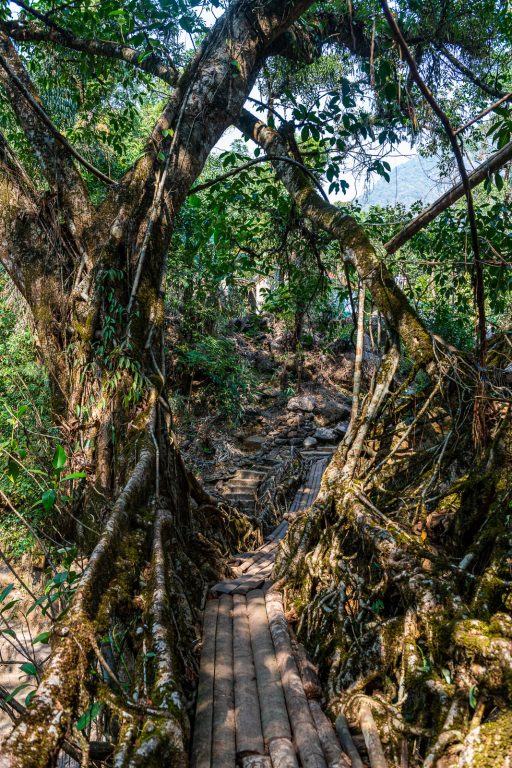
Double Decker Living Root Bridge, Sohra or Cherrapunjee, Meghalaya, India
The bridges, still used by the locals, have somehow become a regional attraction for Indian tourists as well- even so along the path hawkers are selling drinks. Until about three years ago, the route was a slippery, muddy track, and the locals decided to construct a stairway out of cement to make the daily climb a bit easier and less-dangerous experience. The hard part wasn’t walking down, but the trek back up will ensure you have a good night’s sleep.
Once I was able to actually physically stand on them myself, I was surprised to feel they were as sturdy as they were, and shook as little a normal bridge. An achievement. This felt unique considering its a 150 yr old root of a tree.
Check out the rest of my photos from northeastern India!



